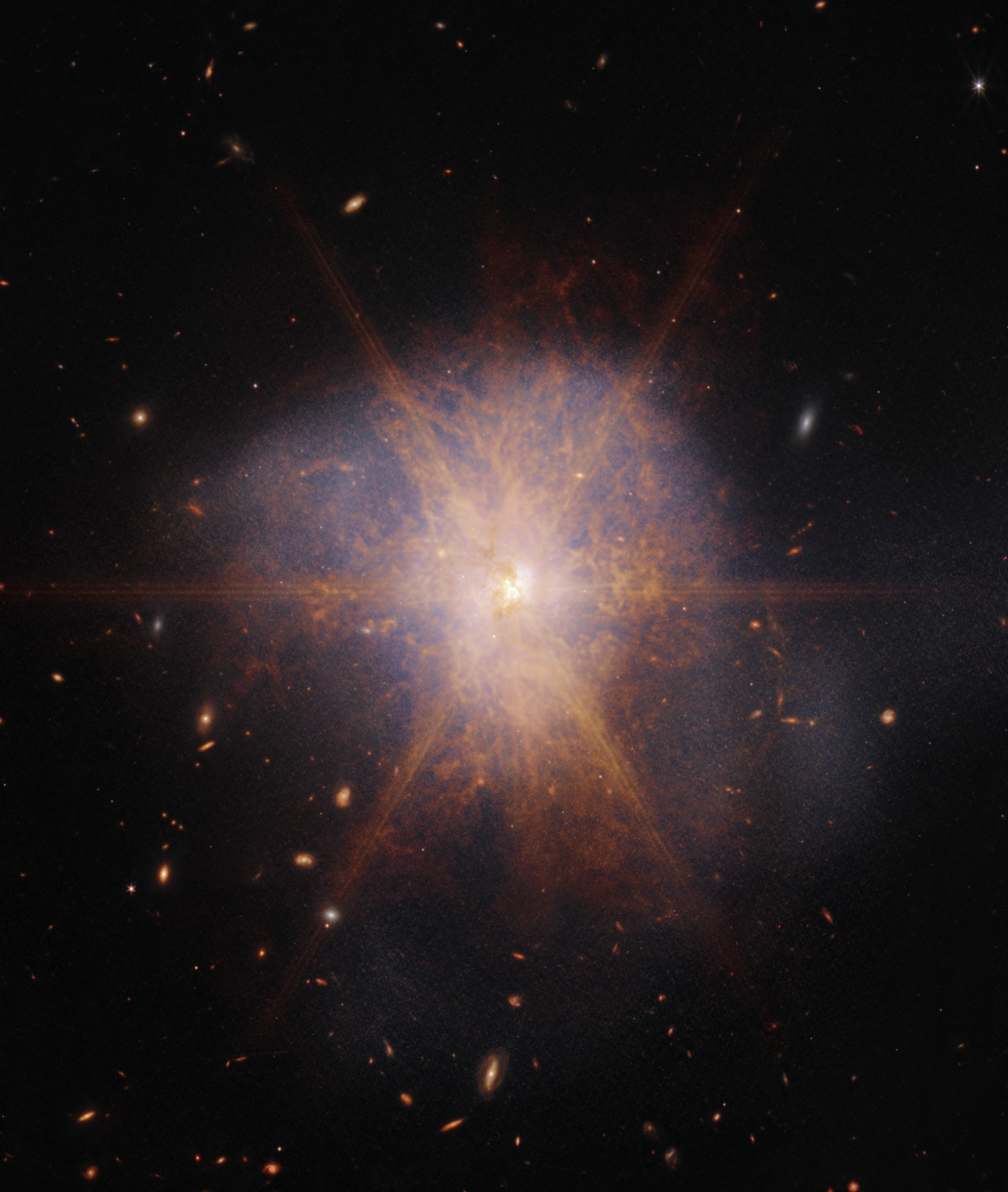NASA has published a new image taken by the James Webb Space Telescope (JWST). It demonstrates the consequences of the collision of two distant galaxies.

The object photographed by JWST is known as Arp 220. It is located at a distance of 250 million light-years from Earth in the direction of the constellation Serpens.
Arp 220 was formed as a result of the collision of two spiral galaxies. It began about 700 million years ago. The majority of the energy released during the collision is in the infrared range, which makes it an ideal target for JWST. The total luminosity of Arp 220 is a trillion times the luminosity of our Sun. For comparison, the luminosity of the Milky Way is only 10 billion solar.
The collision of galaxies led to the condensation of gas clouds, provoking a giant outbreak of star formation. Astronomers have counted at least 200 huge star clusters in a dense dusty region which has a diameter of only 5 thousand light-years. This tiny region contains as much gas as our entire galaxy.
In addition, Arp 220 is home to many supernovae. Previous observations on radio telescopes have revealed about 100 remnants of dead stars in an area with a diameter of less than 500 light-years. The Hubble Space Telescope has also detected the cores of the parent galaxies at a distance of 1,200 light-years from each other. Each of the cores has a rotating star-forming ring emitting powerful infrared radiation, so noticeable in the JWST image. This bright light creates diffraction bursts that dominate the image.
JWST also detected faint tidal tails on the outskirts of Arp 220. They consist of matter pulled out of galaxies by gravity (it is shown in blue). Organic material, represented by a reddish-orange color, appears in streams and threads passing through Arp 220.
Earlier we talked about how astronomers were able to determine the shape of a giant galaxy.
According to https://www.nasa.gov
Follow us on Twitter to get the most interesting space news in time
https://twitter.com/ust_magazine

